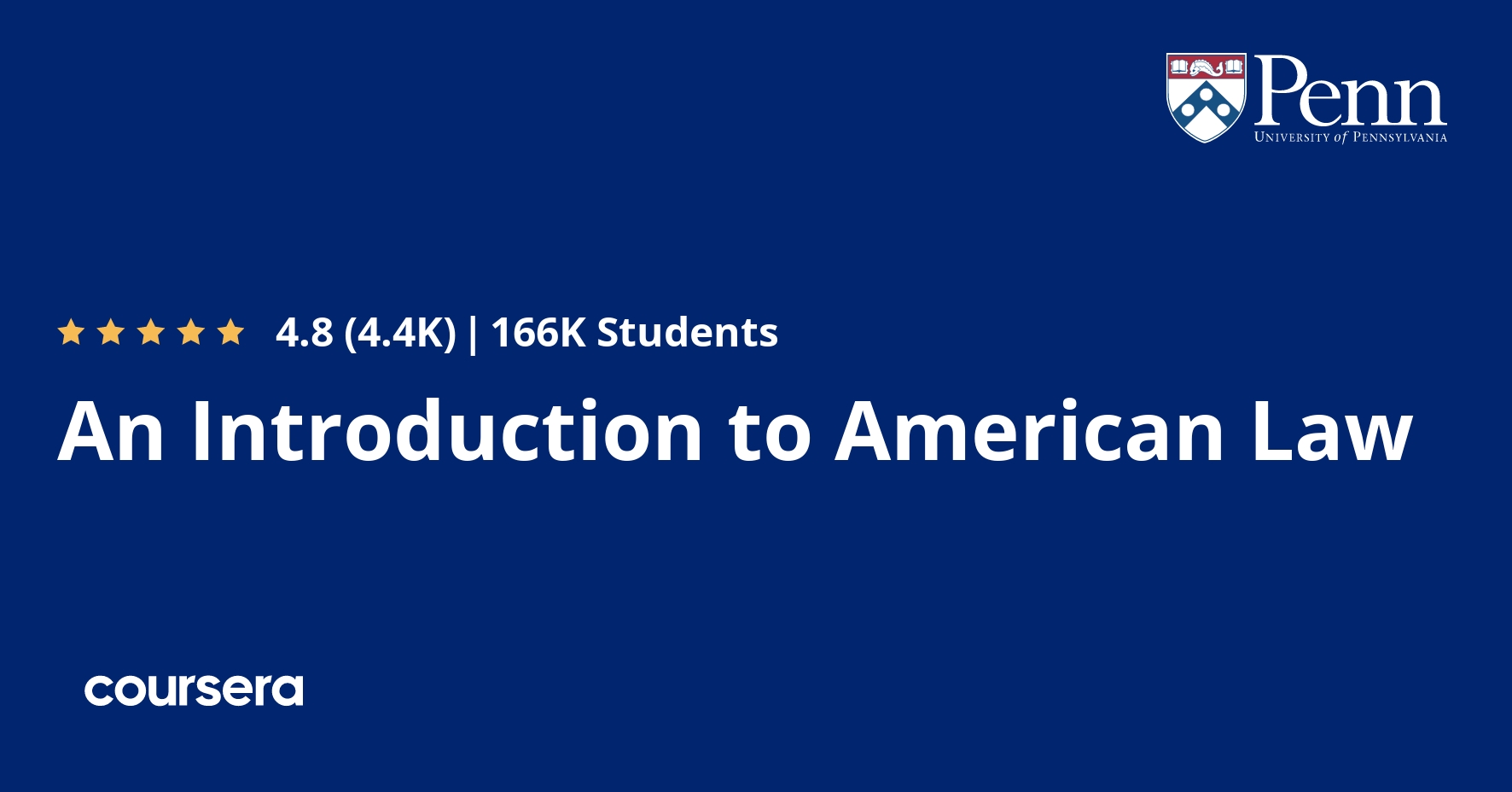Description
This course will give you a glimpse into six different areas of American law: Tort Law, Contract Law, Property, Constitutional Law, Criminal Law, and Civil Procedure. You will gain insight into the complexities and dilemmas that arise from the application of law in different settings, and what is distinctive about American approaches.
What you will learn
Welcome
Tort Law
Tort law governs how people may sue each other civilly (as opposed to criminally) in order to receive compensation for harms or injuries other people caused them. In this module, Professor Allen will explore the goals of tort law through a historic case. She will address what makes tort law distinct and issues surrounding negligence and liability.
Contract Law
Contract law governs how promises between two individuals are enforced. Few areas of law impact our daily lives as much as contract law, and in this module you will gain a deeper understanding of what a contract is and what makes it enforceable. Professor Wilkinson-Ryan will address what constitutes a contract, why the law enforces them, the legal meanings of words in contracts, and the important requirement of consideration. Expectation damages, or the amount a court orders someone who breached a contract to pay will also be explored, all through hypothetical and real cases.
Property Law
Property law governs the relationship between individuals and things, known as property. In this module, Professor Balganesh will explore the differences between property and tort and contract law and about several specific examples of property law in action: adverse possession, landlord/tenant, and licenses. You will learn about what makes U.S. property law distinct – its origins in common law, imprint of legal realism, and pragmatism.
Constitutional Law
The study of constitutional law is among the most exciting parts of the law because it provides for the structure and functioning of the U.S. government. In this module, Dean Ruger will address the document itself, how it has been applied over time, the history of the document, and what makes it unique. The structure of the U.S. government as a government of limited, separated powers will be explored along with the important individual rights the Constitution provides and how the U.S. Constitution compares to others around the world.






